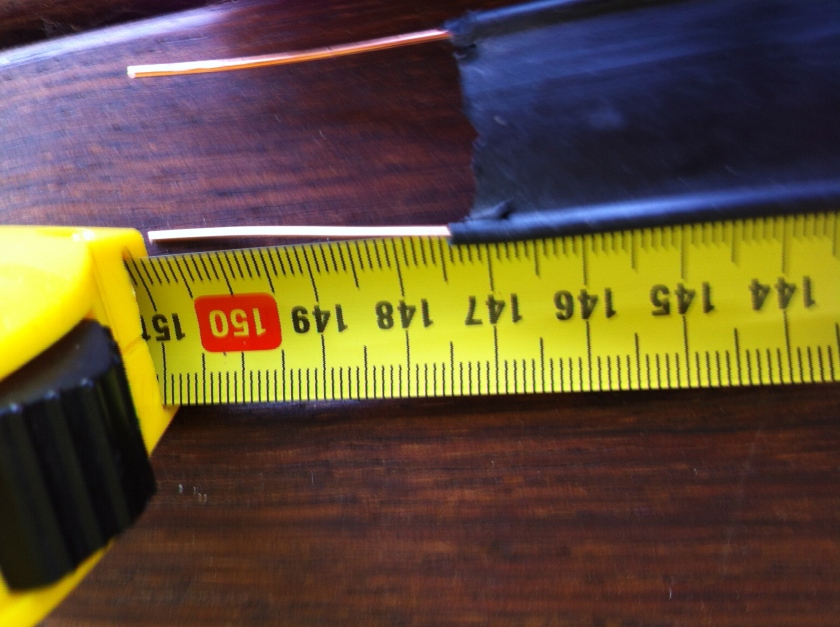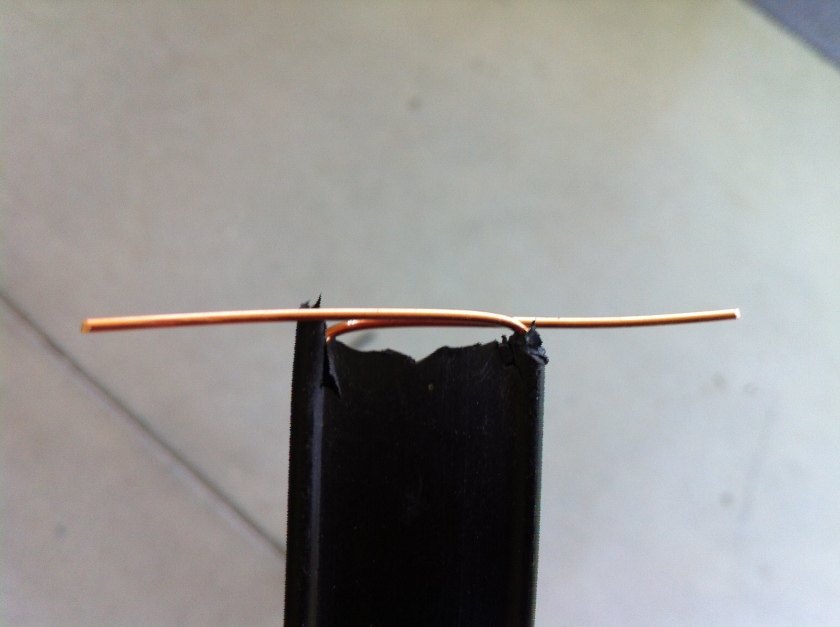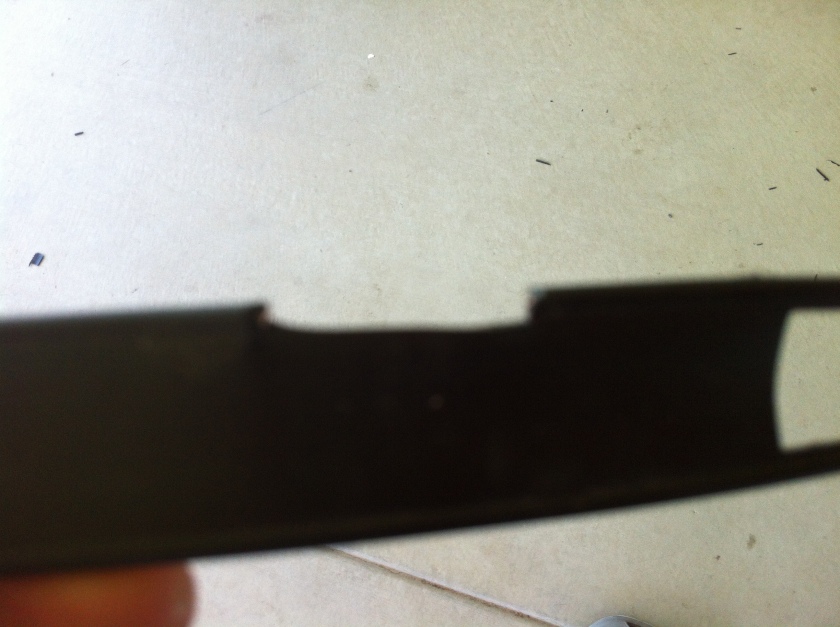I came across this bit of kit this morning, in a search for ways to do D-Star. The DV Adapter uses your present Radio for D-Star contact’s.
I can’t afford one at present, but I think I’ll put it on the Christmas wish list haha
I came across this bit of kit this morning, in a search for ways to do D-Star. The DV Adapter uses your present Radio for D-Star contact’s.
I can’t afford one at present, but I think I’ll put it on the Christmas wish list haha
Today the Baofeng HT arrived after a short stop over in Darwin hihi. These radios are so cheap everyone should own at least one of them for a knock about HT.
I also ordered the programming cable, but I ordered it at a later date, so it is not here yet. So far the only complaint is the stupid power pack adapters that seem to be so prevalent these days, but for the price I understand.
Also can’t seem to hit the VK4RAT repeater properly from Kelso at present. I can open it up but no audio heard so maybe I am operating on low power (haven’t checked the setting yet) , but more likely it is the big lump of granite that is in the way 🙂
Absolutely the best book I could recommend for ham radio, especially if you are in to building antennas.It is available for loan at the Kirwan Library 🙂
Yesterday I needed a new project to take my mind off certain things here, so I set about making a new 2 meter antenna. I’d rearranged my shack again and set it up was follows.
– Icom IC703 for HF (40m) APRS 7036.5kHz using an 80 meter vertical loop. Connected to a eePC running AGWUIDigi to crossgate to VHF APRS.
– Icom 706MKIIG connected to iMac running MacLoggerDX (my favourite for DX Cluster use) and connected to an MFJ1700C antenna switch to a choice of two ZS6BKW antennas or a 43 foot vertical.
– Icom 706MKIIG connected to eeePC running HRD and DM780 (my favourite for PSK) and connected to MFJ1700C antenna switch to a choice of two ZS6BKW antennas or a 43 foot vertical.
– Kenwood TM201A 2m FM transceiver for VHF APRS (145.175 MHz) using a TinyTrak4 as TNC in KISS mode, and connected to eeePC running AGW UIDigi. The antenna is a home-brew 2 meter J-Pole at 10m metres elevation and using a homebrew 4:1 balun.
Both IC706s have a VHF/UHF outlet unused, so I decided to make use of them by constructing two antennas. I will eventually make a nice yagi for long range 2m and 70 cm contacts but for now I was more interested in local access to the repeater and for cyclone season emergency use. I started looking at indoor antenna options and found some very interesting choices. I wanted something I could work on right away, and get going in an hour or two but that would give OK performance. I came across a description and instructions for slim jim antennas made using 450 ohm ladder line. This style of antenna is a bit like a folded over j-pole, basically a u shaped antenna with a short matching stub. Fed with 50 ohm coax and tuned by moving the coax connection points, it was a very easy antenna to make and I already had all the materials. I ended up making two antennas, one for each 706 radio.
I tested on air and got good reports. I got the SWR down to 1.2 to 1 and the antennas are resonant around 146.5 MHz across a fairly broad range.
Construction of the antennas is outlined in this link. http://www.hamuniverse.com/ke4nu450slimjim.html
My construction photos may assist also-
Start with 1500mm of 450 ohm feed line
then fold over the end and solder as below

Measure 1473mm to the other end and bare the wire from this point enough to fold over as you did the first end.

Fold over and solder that end as well

Now measure 482mm up from the one end (this will be the bottom)and cut one conductor. Measure up a further 25mm and cut again leaving a little 25mm cutout such as below.

Measure up 102mm then remove insulation up to about 155mm as below.

Strip some coax of your choice- here RG58 since it is a short run- bare two log tails like so.

Connect your antenna to an analyser or transceiver (on low power) with SWR meter. Attach these bare ends to the stripped section using small alligator clips and move them up and down to get the best match – I failed to take a photo of this. But below is a photo of the stripped section to which you attach these bare ends of the coax. Make sure the braid goes to the stub (short end).
Here is my analyser reading- I got better than this eventually with a bit of trial and error. Got X=0 and SWR 1.2:1

Fit a PL259 to the other end of your coax.

Secure the coax as follows. I added some heat shrink over the top, here prior to shrinking and partly removed to show coax fitting.

Now that I am back home and sorted most things radio, I’ve been able to dedicate some time to getting the APRS iGate running again. It operates on 2 metres and 40 meters. The choice of 40m HF is so that standard calls (like me) can have an HF APRS option. HF APRS works great for remote travel. 40m frequency is 7036.5 kHz. You can learn more about APRS in Australia at http://www.aprs.net.au
My APRS iGate Digipeater uses the following
VHF
– Kenwood TM201A on 145.175 MHz
– home made J pole antenna
– TinyTrack v4 as standalone Digipeater connected via serial cable and
– Belkin USB serial adapter to
– Asus eeepc, running
– AGPE Packet Engine
– AGWUIDigi
– AGWTracker
HF
– Icom IC703 on 7036.50 kHz connected via
– SignaLinkUSB external soundcard, interfaced to
– Asus eeepc, running
– AGPE Packet Engine
– AGWUIDigi
– AGWTracker
– 80m Vertical loop or ZS6BKW antenna depending on other uses.
The TinyTrack4 on VHF works as a standalone digipeater, which means it does not need to be connected to a computer. It simply retransmits any received signals via the radio it received them on (after a short delay). When connected to a computer via the serial cable, the received decoded data can be gated to the internet as well- as it is now.
On HF, AGWPE configures the SignalinkUSB soundcard as a TNC, porting the received sound/data to and from the computer. AGWUIDigi allows cross port retransmit so that received HF signals are retransmitted on VHF. This means that if my internet connection is down, chances are the retransmitted signal will be received by a local VHF iGate and gated to the net.
AGWTracker displays the received signals on to digital maps on my computer screen.
I’ve been doing lots of work to my Nissan Patrol in preparation for the touring season, including tidying up the cabin to make it look brand new again, and to make it a more pleasant experience to spend every day for months on end in the cabin. You can read more about the work I am doing, on Olsen’s 4WD Tours and Training Blog
A tidy up of the radios was in order as well.

Following on from Part 1. Today I began examining all of the feed line issues that presented themselves in my 4WD.
I started with the two UHF CB radios. Both are GME TX4400’s– one uses a single antenna mounted on the bullbar and is used for communication with truckies, the other uses co-phased 5/8 wavelength antennas on the roof rack, and is used for communications with our tour convoy. Both systems had issues of poor transmit performance,
I started with the single antenna a GME AE4705 a robust antenna. Despite it’s tough design, I have seen them fail when subjected to the endless corrugations of Australia’s toughest tracks. I began by inspecting the antenna itself which was quite intact. Next I disconnected the antenna from the feed line and tested the feed line loss using my MFJ analyser. I found a hefty 3dB loss over the less than 3 metres of cable and that was at 120 MHz not 477MHz (my analyser does not include UHF), so I began isolating the problem which turned out to be a failed joiner and a bad joint in a PL259. Once repaired the loss came back to about 0.1dB overall at 120 MHz.
I then started on the co-phased UHF antenna system. This turned out to be a bit more difficult but once again came down to a bad job on the terminations. I repaired those and tested the setup on the local repeater. I’ve made the co-phasing harness using all 50 ohm cable which technically is not ideal but I suspect the antennas are less than 50 ohm impedance (possibly about 30 ohms) so the two amount to about 60 ohms which is as near a match to 50 ohm as I would achieve using a 1/4 wavelength at 75 ohms, and the losses of all the joins of the phasing harness at UHF would probably negate any gains from the matching sections, so I am happy so far with this setup. Tomorrow I’ll check the actual antenna impedances. I can’t test the SWR at UHF but I reckon on about 1.8:1 if my impedance calculations are OK. The two antennas are a little less than 2 metres apart. I suspect they should be odd multiple of 1/4 wavelength to work best so at 477 MHz, the nearest value would be either 1.88 metres or 2.51 metres. I intend to investigate the effect of spacing later.
I then started on the HF auto tune antenna where I spent most of the day. This amazing antenna performs far better than it should in theory. HF auto tune antennas such as the Barrett 910 are pretty low efficiency affairs, but this antenna has been fantastic nonetheless. I’ve been very lucky to make several overseas contacts while mobile, and commonly get great signal reports from this mobile setup, which I put down to good earthing and bonding. But the 910 was not tuning below 3.9 MHz no matter what, and that present problems for me on 80m nets and on 2020kHz RFDS.
I have long suspected a problem with the feed line but what I found was a problem with the connections on the cable that is responsible for tuning the antenna. This connection was attached to the chassis near the rear wheel, and though wrapped in self-amalgamating tape, is in a pretty poor state. I think ultimately a new cable will be required, as the contacts are not bright, despite several efforts at cleaning. I’ll have to test the antenna at frequent intervals over the next few days to see if it continues to work, or if the tuning starts to fail again.
With only a few weeks to go before I head off bush again, it is usual for me to be checking radios and antennas on the 4WD to ensure they are all working. This year is a little different, because I’ve been really slack for the last 10 months, and none of them are working the way they should.
I have a list of issues to work through-
– The Barrett 950 needs to be reprogrammed. The previous programmer got some ham frequency/mode combinations wrong. plus I want to program the nets I use into preset channels.
– New Barrett 550, Justine’s new base radio needs programming.
– Both TX4400 UHF radios in the Nissan are not performing well, due to either antenna or coax issues.
– The Terlin Stealth Plus– 80m to 2m whip- was mounted on a heavy duty base using an adapter I had turned up, and it is too long, contributing to tuning problems on 80m. I used the antenna analyser to find the best compromise tuning for 40m APRS and 80m voice today, but I think I will change the base to the correct one for that antenna.
– The Barrett 910 autotune won’t tune below 7 MHz, due to what I suspect is a coax feedline issue.
Today I inspected the AE4705 UHF antenna mounted on the bullbar to see if all was intact inside, and it seems to be OK. I tested the feedline, and it is a bit suss so we’ll take a closer look at that. Also the co-phased UHF antennas on the roof rack seem to be fed with a coax that has a dead short braid to centre.
One area of interest to ham radio operators is aircraft enhanced DX on VHF and UHF. A great aid to this is a piece of software called PlanePlotter available from http://www.coaa.co.uk/planeplotter.htm.
I’ll attempt to provide some more info shortly, but for now have a good read of the website.
Regards
VK4MDX
Tropospheric ducting on 31/12/09 provided me with my first contacts on 144 MHz 2 meter band. 144 MHz is usually good for short distance almost line of site type contacts, but tropospheric ducting is one mechanism which can provide long distance communications on this band.
My contacts were all VK3 (Victoria)
VK3MY
VK3AMZ
VK3KH
VK3XPD
VK3AUU
VK3AMZ
VK3ZZF
VK3HJ
Mostly around the 2000 kilometer mark.